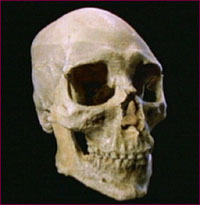
|

|
George W. Gill Professor of Anthropology, University of Wyoming Why do we feel we should be able to study Kennewick Man? Ancient human skeletal remains are a valuable source of scientific information and are protected as archeological resources under federal law (the Archaeological Resources Protection Act). As a trained physical anthropologist at a state institution, I have the legal and ethical responsibility to curate, study, protect, and sometimes repatriate the human skeletons that come to my laboratory. From human skeletons, we can derive information relating to human diseases, injury, warfare, origins, migrations, and gene flow. The more ancient skeletons as well as the better preserved ones tend to be more important skeletons scientifically because of the vast amount of new information that they can provide. Kennewick Man may be one of the most important skeletons ever unearthed in North America. It is a very ancient skeleton and therefore not a close relative of any human alive today. Thus, claims of cultural or biological affinity by any group existing today are so tenuous that they should not be allowed to prevent scientific study of this important find. The skeleton should remain in the domain of all humanity and not be claimed by any single federal agency or any single religious or cultural group. It should be studied by all qualified scientists whose research might be able to provide new knowledge from the secrets that these ancient bones contain.
These are not the multivariate, cranial-measurement approaches used by most other physical anthropologists who study ancestry. They constitute a somewhat independent approach. My approach would provide another independent means of determining ancestry through a combination of different kinds of trait evaluations. In short, my approach will hopefully provide us with insight to help answer the question of who Kennewick Man's closest relatives were in regard to the major racial elements of today. Does Race Exist? | Meet Kennewick Man Claims for the Remains | The Dating Game | Resources Transcript | Site Map | Mystery of the First Americans Home Editor's Picks | Previous Sites | Join Us/E-mail | TV/Web Schedule About NOVA | Teachers | Site Map | Shop | Jobs | Search | To print PBS Online | NOVA Online | WGBH © | Updated November 2000 |
 George Gill (with Jaime Stuart)
George Gill (with Jaime Stuart)
 Kennewick Man, whose reconstructed skull is shown
here, should remain in the public domain, Gill feels.
Kennewick Man, whose reconstructed skull is shown
here, should remain in the public domain, Gill feels.